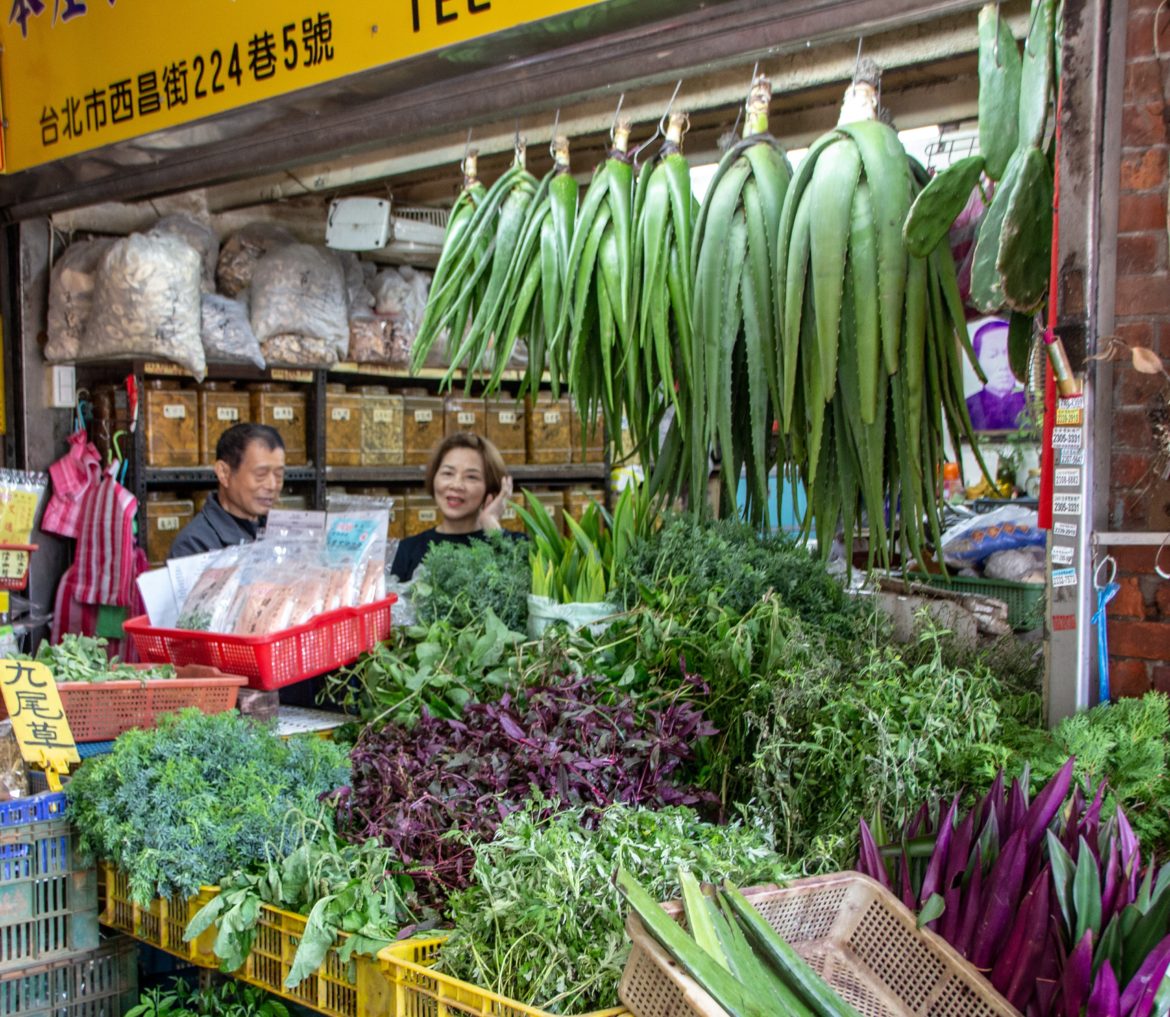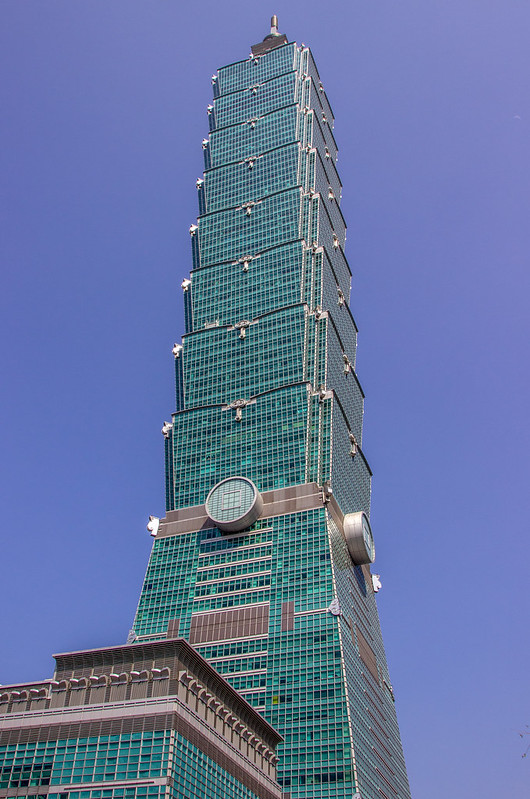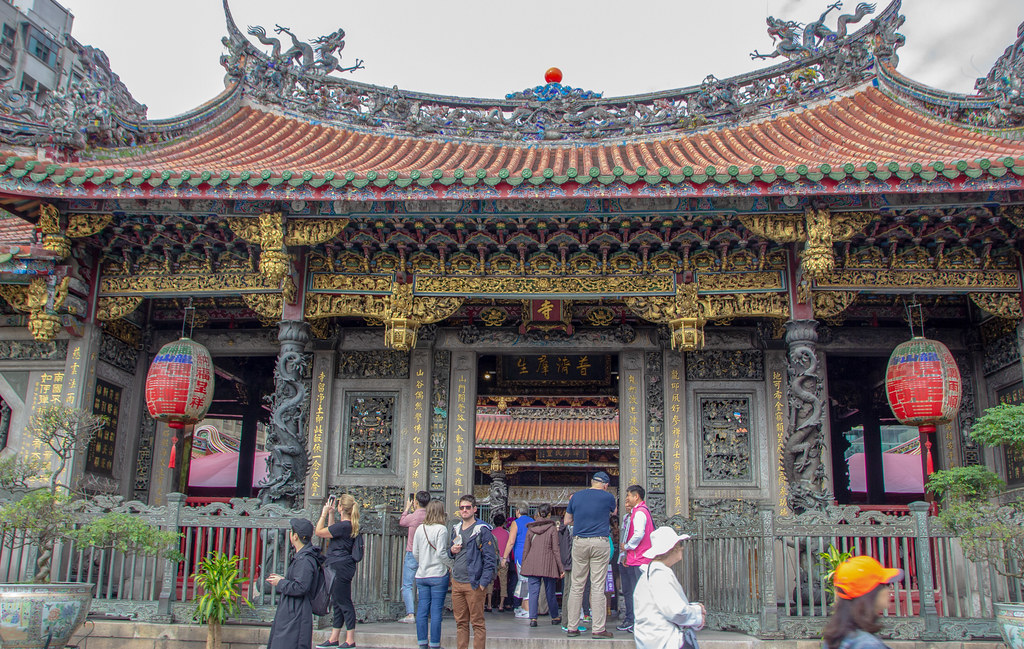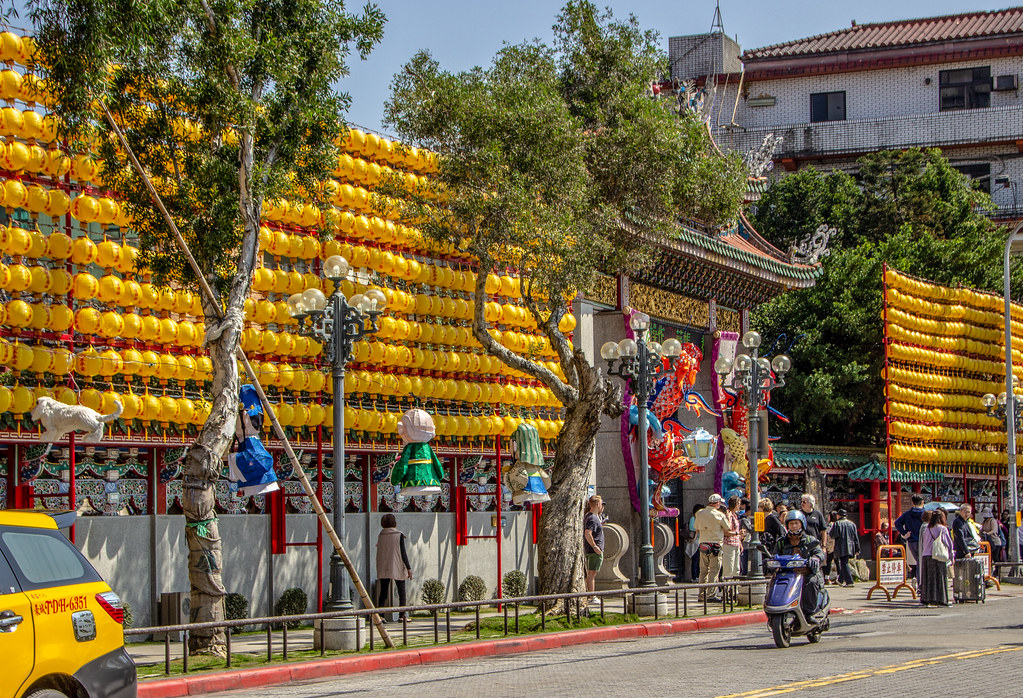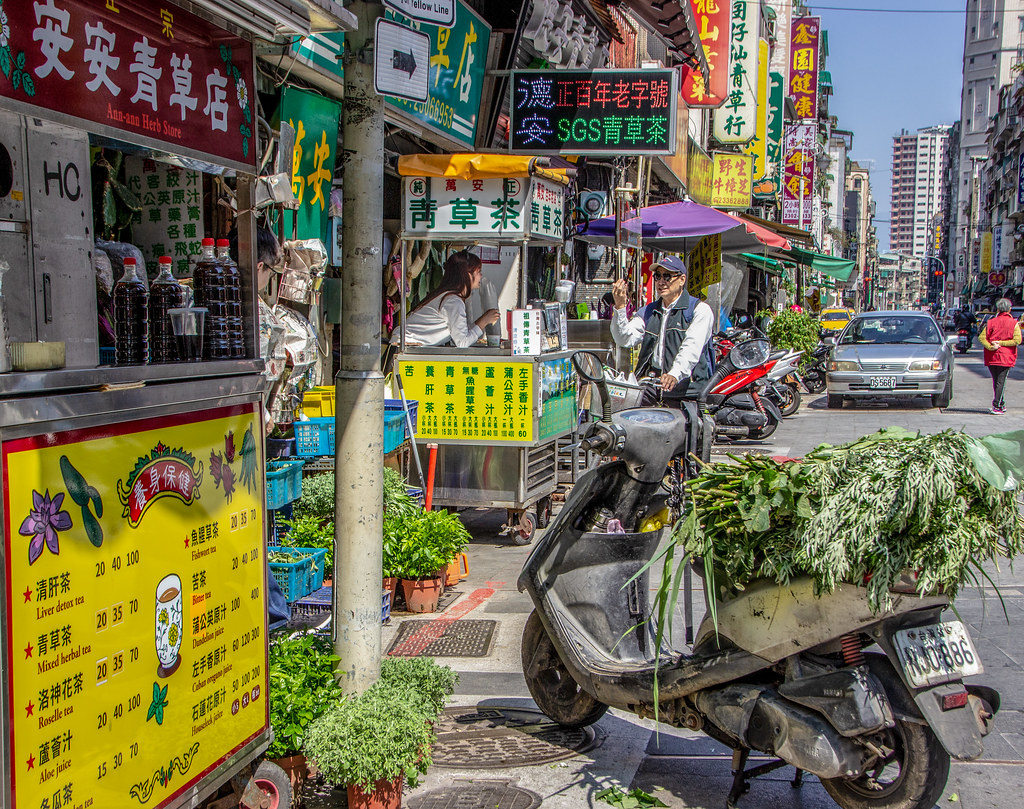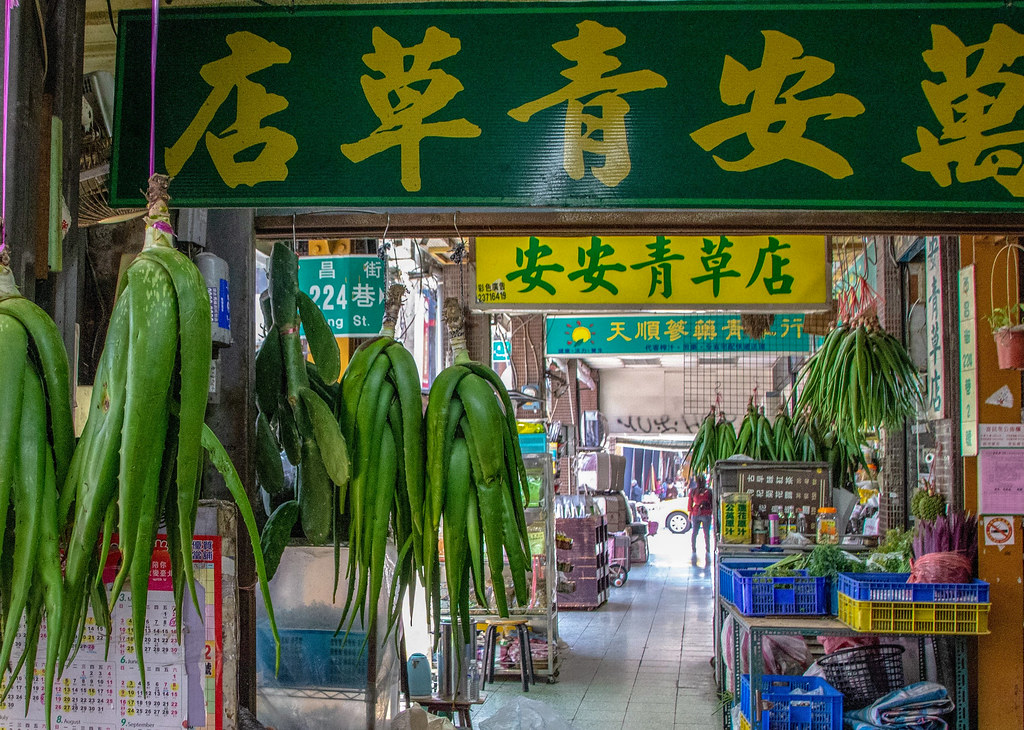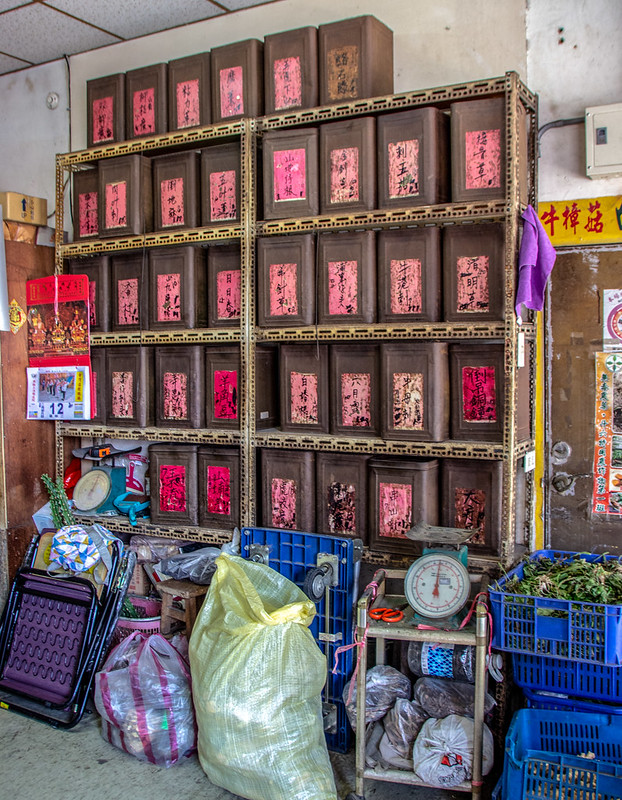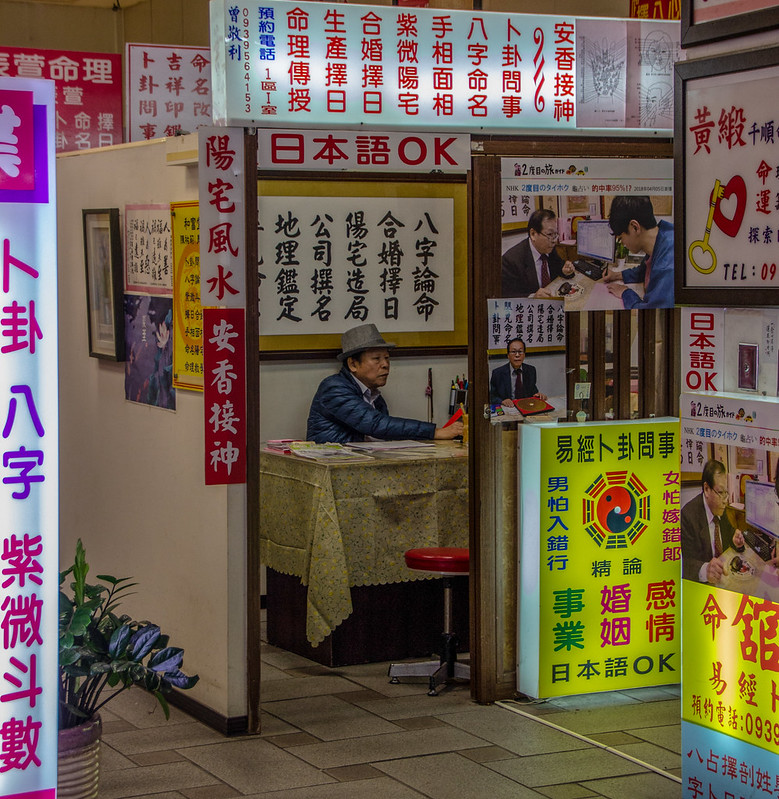I set off for Lungshan Temple in Taipei, along with the nearby Herb Lane on a warm, sunny day in March. Firstly, my journey begins as Taipei’s tallest building, TAIPEI 101. In the Manka district. I intend to have a glimpse of the spirituality and Chinese Herbal Medicine traditions in Taiwan. In the end, I discover an unplanned experience of fortune-telling to complement my day with an insightful ending.
TAIPEI 101 is a stereotypical place to start a day in Taipei. I enjoy just taking in the magnitude of this blue-green glass building standing at 508 meters. However, I decide to not spend $20 for the panoramic view on the top floor. TAIPEI 101 was the world’s tallest building from 2004-10, with 8 segments, a Chinese number for prosperity and good fortune.
The “101” represents high ideals and perfection, beyond 100 and the number of its floors. Then, outside of this iconic landmark, I went downstairs to the MRT for convenient underground transportation to the Manka district. The MRT reminded me of Hong Kong’s metro with its impressive, organized color-coded routes in Chinese and English.
Lungshan Temple in Taipei
Reemerging from the subterranean MRT, I see the Lungshan Temple dramatically in front of me. This popular temple was established in 1738 and dedicated to the Goddess of Mercy, Guan-yin. Furthermore, it was built by Chinese immigrants and named after its root temple in the Fujian province.
Altogether, this colorful, syncretic temple integrates Buddhism, Taoism and Confucianism as a Taiwanese folk religion. Most noteworthy, it’s one of the “Top 100 Religious Scenes of Taiwan.” Also, this temple is less strict about customs. So, you can wear most anything without needing to cover legs or shoulders. Modern skyscrapers, in contrast, tower and engulf this ancient hub.
The Lungshan Temple in Taipei exemplifies tradition in more colorful architecture, in comparison to its Chinese ancestors. The temple’s bright design adorns in gold, black, blue, green and red. Also, abundant altars of fruits, purple orchids and gifts proliferate for the gods and goddesses. Bronzed dragons, bonsai plants, wood carvings and gold statues of deities embolden an eclectically artistic vibe throughout the complex. In addition, a palanquin-type bell and drum towers offer sound. The temple faces south with a front and back hall and a central hall, protected by exquisite dragons.
Lungshan Temple in Taipei
“It’s better to travel well than to arrive.” -Buddha
While being a spiritual vortex, it’s anything but peaceful with hundreds of people gathering. Overall, it’s a raucous entanglement of people praying, making offerings, burning incense, taking selfies and multilingual chatter. However, it provides an opportunity for the Buddhistic practice of detachment to pray or meditate with the Goddess of Mercy. I give respects to Guan-yin, while praying to be present and compassionate.
Most importantly, I pray: “It’s better to travel well than to arrive.” I resonate with the Taiwanese concept on syncretic temples, as inclusive. Taoism is the foundation of Chinese Medicine and the only true philosophy, that I feel aligns with my core spiritual values.
Xichang or Herb Lane
Bordering the Lungshan Temple in Taipei is Xichang or Herb Lane, another traditional landmark that was in a sense, an extension of the Temple: sufferers requested divine prescriptions from Gods at Lungshan Temple and bought herbs from this historic lane. Approaching Xichang feels like delving into an intimate alley with ancient Chinese secrets to discover.
Before modern medicine, the natives relied on the Chinese traditional medicine for health. More than 4 herb shops gather on Herb Lane, Wan’an, Sizhi, De’an, & Shengyuan. Many were handed down to a third generation, but still keep their old signs and medicine chests.
There is a healing cornucopia of herbal teas, ointments and hundreds of herbal medicines sold here. The herbs are locally produced with a reputation for being an excellent quality, with fresh herbs from northern Taiwan and the dried or processed from the south. I stop at an herbal tea & juice stand with healthy selections of wolfberry, burdock, dandelion, pandan, fishwort, roselle & oregano, finally choosing the wolfberry tea to invigorate me.
Ginger, Saxifrage, Plantain, Passionflower, Camphor, Honeysuckle, & Aloe…
Strolling through the intimate alleyway, I notice fresh herbs like ginger, saxifrage, plantain, passionflower, camphor and honeysuckle. There are abundant, large green aloe vera plants, hanging from the ceiling throughout the complex. I find 2 stores with the original metal bins full of herbs, displayed along their wall of classic Materia Medica herbs.
I am cautious with taking photos and ask permission from vendors. Most are pleasant and eager to let me take photos, except one elderly woman vehemently prohibits me. Being an Acupuncturist and Herbalist, I feel at home in places like this, only wishing that I knew more Chinese to be able to read and quiz myself on all its herbs. Leaving this healthy haven is difficult for me, as I could stay all day.
Fortune-telling
Approaching the MRT across the street, I notice a sign for the “Largest Fortune- teller Street in the country,” all just downstairs in the mall on the way to the subway. Being an experienced western astrologer and amateur Chinese Ba Zi and Feng Shui reader, how could I resist? My Ba Zi training was cuts short by the unexpected death of my teacher, Dr. Richard Tan from Taiwan in the U.S. I enthusiastically explore the fortune-telling options, especially wanting a Ba Zi Reading.
All fortune-telling vendors have small rooms, illuminated with colorful signs promoting their services for Ba Zi, Feng shui, Palm and Face Readings. I choose a male reader with modest English skills, who carefully uses his computer and worksheet, to fill out my Ba Zi chart and give me insights. He also looked at my palm for more information. This inspires me to set a goal for 2020 to finish my Ba Zi training. From my perspective, these fortune-telling techniques are much more real and powerful than the readers can convey. I believe quantum physics, mathematics, and science support these practices, that mainstream perceives as superstitious quackery.
Overall…
On my way back to TAIPEI 101 on the MRT, I reflect on how it seems like I was away for days, in just 4 hours in the Manka district. Just like the compact block in Manka district with Lungshan Temple, Herb Lane & Fortune-telling, I crammed massive experience and history into that short time for my memory. Reflecting feels good, to just let it all sink in and realize how profound this day was in Taipei, knowing that I will return to further explore this magnificent city.
Read More!
A Fascinating Taiwanese Tea Tour & Health Benefits
Taiwan’s Stunning Volcanic Landscapes & Geothermal Spas

